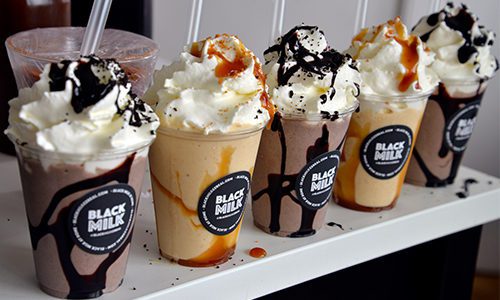
Entrepreneurs: Snapchat & the self-made billionaire
Launched in 2011, the multimedia messaging app Snapchat enables users to share photos, videos, text and drawings. It is unique in that the media sent is no longer visible to the recipient after a period of time pre-set by the sender.
Evan Spiegel, the co-creator of Snapchat, invented the app as a fluid and up-to-date means of communicating via social media. It is marketed as an antidote to the stress that can be caused by the length of time personal information can remain on social media.
Spiegel has been quoted as referring to the “emergency detagging” of old photos on Facebook prior to job interviews, or the photoshopping of imperfections out of “candid shots” before they appear on the internet.
Describing the app’s mission statement, he says Snapchat is more than just capturing the traditional moment of what seems “pretty or perfect”. It’s about communicating across the full range of human emotions.
His philosophy struck a chord with Snapchat users, as he was named as the world’s youngest billionaire when he was just 26 years old. Now, at the age of 28, he is worth $2.5 billion, according to Forbes.
Snapchat has an estimated 186 million active users daily, based on the latest figures available from the last quarter of 2018.
How did Snapchat begin?
Born in Los Angeles, California, in June 1990, Spiegel attended Santa Monica’s Crossroads School for Arts and Sciences, while also taking design classes at the Otis College of Art and Design.
He went to summer school at the Art Centre College of Design in Pasadena, before attending Stanford University. He was always a hard worker, taking paid employment as an intern for a biomedical company, and also working on the TxtWeb project at Intuit when he was a student.
While studying product design at Stanford, he designed an app with ephemeral messaging as a class project in April 2011. The idea was initially ridiculed by his fellow students.
However, later in the same year, he collaborated with his classmates, Reggie Brown and Bobby Murphy, to design a prototype of the concept, which they called Picaboo. It was launched in July 2011 and was renamed Snapchat two months later.
Its initial focus was on person-to-person photo-sharing. The app was an instant hit, thanks to its usability and technical prowess.
In 2012, Spiegel left Stanford University shortly before completing his degree to focus wholly on Snapchat. By the end of the year, his app had one million daily active users. In 2013, Spiegel turned down a $3 billion offer from Facebook to buy Snapchat.
How has Snapchat evolved?
Snapchat has become the most important social network of their generation, according to a survey of teenagers in the United States in late 2018, ahead of its photo-sharing rival Instagram and other social networks such as Facebook and Twitter.
Snapchat traditionally appeals to younger mobile users in the teenage demographic – almost one-third of its adult users are in the 18 to 24 years age bracket. There has been a growth rate of around 50% per year for the past few years.
In terms of its technical evolution, Snapchat upgraded to version 5.0, known as “Banquo”. It was released for iOS, introducing several design and speed enhancements, such as double-tap reply, swipe navigation, in-app profiles and an improved friend-finder.
Snapchat is increasingly being used to promote brands through marketing campaigns, being viewed as the new platform for advertising, as studies have shown 76% of Snapchat users have made a purchase online during the past month.
Accessible to every business, no matter what their budget, it offers both paid-for and free platforms to access the community.
One trend that has evolved is that of the “influencer”. When a brand hands over a Snapchat channel to an influencer, it is effectively permitting a Snapchatter to promote its products and services. This can be an inspired way of getting publicity.
What are the most popular brands?
Snapchat users are known for enjoying insights into the brands they follow, including sharing behind-the-scenes footage of events in the workplace, for example, getting to know the personality behind their favourite brand.
According to recent surveys, the most popular brands trending on Snapchat are BuzzFeed, Comedy Central and iHeart Radio. In terms of sectors, beauty, fashion and sportswear rank first for popularity.
The most popular activity among Snapchat’s youth users is accessing snaps and stories from people they know personally. Brand discovery ranks just behind this daily activity.
Who are the biggest celebrity Snapchat users?
Plenty of leading music industry icons are Snapchat users, such as Ariana Grande, Chris Brown, Demi Lovato, Ed Sheeran, Enrique Iglesias, Gwen Stefani, Jennifer Lopez, Justin Bieber, Little Mix, Miley Cyrus and many more.
Other leading users include actors Arnold Schwarzenegger, Chris Pratt, Dwayne “The Rock” Johnson, Eva Longoria, Hilary Duff, Jessica Alba and Reese Witherspoon.
Supermodel Bella Hadid uses Snapchat to help reach her fans, sharing selfies and snaps of her friends. She has been a model since 2012 and found major success at New York Fashion Week 2014.
Her sister Gigi Hadid, also a model and star of the reality show The Real Housewives of Beverly Hills, is another popular Snapchat user, who models for designers like Chanel.
The app is also favoured by sports personalities, TV reality stars, television presenters and celebs from just about every other walk of life.
What’s the future of Snapchat?
Snapchat’s revenue from advertising is up – and thanks to the young demographic of users, advertisers and brands are still flocking to invest in the platform. It has been partnering with Amazon to test visual e-commerce.
However, there will have to be a fine balance to tie in with the movement to limit the amount of advertising that young people are exposed to.
Snapchat was redesigned early in 2018 and it wasn’t entirely popular, so further tweaks took place in May in response to the concerns. Snapchat users are loyal and care about the platform. This is why Spiegal is keen to listen and do things that they will like, in order to hang on to the young and switched-on user base.
Reduce the hassle of managing premises for your business by letting Headspace Group take the strain. Contact us for more details of our coworking environments for the technology, media and creative sectors.
© dennizn / Alamy Stock Photo



